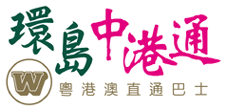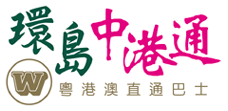TILCHINALINK Official WeChat

TILCHINALINK Official WeChat Mini Program

TILCHINALINK Official Alipay Mini Program (Hong Kong)

TILCHINALINK Official Alipay Mini Program (Mainland China)

Please scan the QR Code with WeChat to purchase tickets

環島中港通
Cross Boundary Buses
Travel Package
Rental
Travel Guide
Contact
- 繁 | 简 | EN
-
CS Hotline
Hong Kong: (852) 2979 8778
China: (86) 4008 822 322
Search Now

Seafood Streets
The pinnacle of Cantonese cooking is fresh seafood and Hong Kong has a well-earned reputation for the quality of its seafood restaurants. An especially interesting and enjoyable way to enjoy seafood here is to head out of the city and find a ‘seafood street’ — a cluster of seafood restaurants often found along a seafront or near a fish market. The restaurants will often have large tanks of live fish and crustaceans from which you can choose. In some cases, you can buy your fish fresh from a market or off a fishing boat and have a nearby restaurant prepare it for you.
Most seafood streets are found in the New Territories and on outlying islands. Some of the most popular include Lei Yue Mun in Kowloon, Sai Kung Seafood Street, Sok Wu Wan Village on Lamma Island and Pak She Praya Road on Cheung Chau.
Prices of seafood items are often charged by weight and can vary by season. Different restaurants use different systems to weigh the food, so be sure to confirm the price before ordering. Also, in situations where the fish is purchased outside the restaurant, such as in Lei Yue Mun, cooking charges are added to the price.
Dim Sum



.jpg)

Dim sum means ‘touch your heart’ and with as many as 150 items on a restaurant menu, and 2,000 in the entire range, it is a challenge to not find something you love. As Cantonese people tend to avoid fried foods early in the day, steamed dishes dominate most dim sum menus. There are also snack-sized portions of pan-fried, deep-fried, and baked foods served in bamboo containers, which are designed to be eaten communally and washed down with tea. Hence, going for dim sum is known as yum cha, which literally means ‘drinking tea.’ Usually a brunch or lunch affair, it is a common form of family, co-worker and other group get-together.
Today, dim sum restaurants come in all shapes and sizes, from traditional to innovative. Start with one of the large mid-priced eateries where in the midst of boisterous conversations you will see multiple generations gather around the table for a no-nonsense family feed and office workers enjoying a short but effective break from the daily grind. When you enter, let the waiter know how many people are in your group, be seated, decide on what type of tea you want, order your dim sum, and enjoy a quintessential Hong Kong experience!
Steamed shrimp dumpling
Shrimp wrapped in a thinly rolled piece of translucent wheat dough. Often, the dumpling will include a small amount of finely chopped bamboo shoots and pork.
Siu mai
A type of Chinese dumpling. The typical Cantonese dim sum variant consists of ground pork, whole or chopped shrimp, shiitake mushrooms, green onions and ginger, wrapped in thin wheat dough, seasoned with Chinese rice wine, soy sauce and sesame oil, and garnished with a dollop of crab roe.
Barbecued pork bun
Tender, sweet, slow-roasted pork tenderloin, usually seasoned in oyster sauce, and encased in a fine, soft bun.
Sweets





Every now and then, Hongkongers take time from the rush of urban life to enjoy the rush of sugar in the city’s dessert shops. Everything from light traditional Chinese sweet soups to Hong Kong fusions are served day and night. Take a break from your to-do list to enjoy something sweet.
Sweets can be ordered in many types of eateries and there are even restaurants dedicated solely to them. Take a look at the following suggestions to get an idea of what’s available:
Red bean soup
This is a typical traditional Chinese dessert, many of which can be eaten like a soup. It is pleasantly sweet and relatively light. It can be served cold or hot, depending on the season.
Tofu pudding
Made with a soft tofu, this pudding is traditionally served with sweet ginger or clear syrup. It is now also commonly paired with red bean soup, coconut milk and a slew of other imaginative ingredients.
Tongyuen
A kind of sweet rice dumpling, tongyuen are often eaten at family gatherings during festivals as the name sounds like ‘family reunion’. The dumplings are made from glutinous rice flour and will have a sweet filling, such as sesame, peanut or sweet bean paste, and are served in a sweet soup, often made with sweet potato and ginger.
White fungus and pear soup
This is a popular winter treat. The ingredients are placed in a bowl which is then immersed in water in a larger container and stewed for several hours. The result is a warming and wholesome dessert. Many believe it helps nourish the skin.
Roast Goose Restaurant Sham Tseng



Yue Kee Roast Goose Restaurant in Sham Tseng, a family-run business since the 1950s, is famous for charcoal-roasted birds from its own farm in Guangdong.
Local Snacks





Snacking in Hong Kong is a diverse business, with everything from slush drinks and egg tarts to octopus balls available on the streets. Graze your way around the city for a really local experience. Just look out for the long lines of customers and you’ll be onto a good thing!
In Hong Kong, snacks are usually sold in restaurants or from take-away windows on the street. The entire repertoire is vast, but here are some classics:
Pineapple buns
Traditionally, pineapple bun contained no pineapple and earned its name because its chequered top resembles the skin of a pineapple. The top half of the bun is made from cookie-type dough, while the bottom is made from Chinese-style bread dough, which tends to be softer and sweeter than Western bread. Many vendors insert a cold pat of butter into a warm pineapple bun.
Egg tarts
A pastry-crust filled with egg custard and baked. This popular Hong Kong snack probably originates from English custard cakes. Some are made with cookie dough while others have a flaky pastry.
Mini Egg Puffs
Sweetened egg batter grilled in a mould to make puffs. Crunchy on the outside, soft on the inside. These days it comes in a range of flavours, including chocolate, strawberry and coconut.
Fish balls
Almost every Hongkonger has a favourite fish ball vendor. Bouncy and fluffy, the best Hong Kong-style fish balls are made with freshly ground fish paste, hand-beaten and slammed to springy perfection. It’s commonly enjoyed on a stick with spicy curry sauce.




 Seafood Streets
Seafood Streets  Dim Sum
Dim Sum  Sweets
Sweets  Roast Goose Restaurant Sham Tseng
Roast Goose Restaurant Sham Tseng  Local Snacks
Local Snacks 